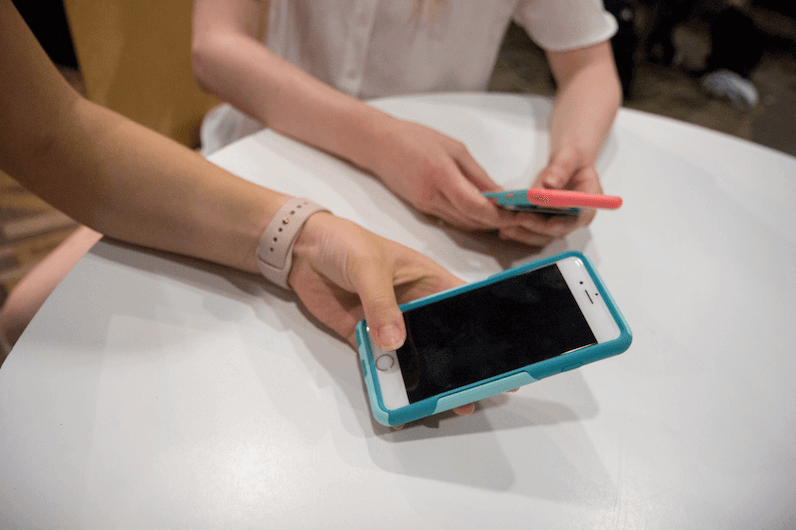by The Cowl Editor on August 30, 2018
Opinion

by Nicholas Moran ’19
Opinion Staff
Walking around campus, students’ heads are down with their eyes glued to screens, and accidentally running into other students on the way to class is all too common. Calls to family members disrupt the peace of the quiet zone in the library. It is clear that our phones have become an integral part of our daily routines, but at what point do they begin to damage our health?
Millions of Americans struggle to escape the addictive pull of their phones. 2,167 times a day, Americans glance down at their smartphones, and 46 percent feel “they couldn’t live without” their devices, according to the Washington Post.
After “30 seconds without stimulation,” said Andrew Martin to the Chicago Tribune, “[I] have this twitch to reach for my cellphone,” feeling the effects of what researchers call “cell phone withdrawal.”
A 2016 Common Sense Media poll discovered that over 50 percent of the nation’s youth feels addicted, with a quarter claiming they use their device “almost constantly.”
However, cell phone addiction is not a mere distraction. Rather, it bears a grave mental health cost. Anxiety, apathy, and depression are all ugly marks of addiction’s emotional toll.
As tempting as it is to pick up your ringing iPhone, it will damage your well-being. Limit screen time, decline disruptive push button notifications, and let the call go to voicemail.
In the years following the the launch of the iPhone, psychologists like Jeane Ranke have warned the Atlantic that smartphones are only contributing to already skyrocketing depression rates, calling it the “the worst mental health crisis in decades.”
Since 2010, the Center for Disease Control and Prevention (CDC) reports that “severe depression” rates among teenage girls have risen by 58 percent, with suicide rates also rising by a troubling 65 percent. Similar research highlights an all-time high in feelings of loneliness.
Research reported in the Atlantic demonstrates a direct correlation between cell phone use and depression rates.
Out of all eighth graders in the U.S., the highest users are 56 percent more likely to feel blue than non-users, and are 27 percent more likely to develop clinical depression. Amongst the nation’s college students, studies find that Facebook users become sadder the longer they are logged on.
Furthermore, these studies find a correlation between usage and suicide. If one uses a cell phone more than three hours a day, they are 35 percent more likely to develop a “suicide plan.”
Even worse, 48 percent of five hour-a-day or more users have harbored suicidal thoughts, whereas only 28 percent of one hour-a-day users suffered similar thoughts.
Smartphones also siphon users’ attention away from daily chores and activities. Excessive phone use further distracts struggling users from potential relief in friendships, hobbies, dating, jobs, and more.
Focusing on the particularly addicted group of young adults, Ranke’s studies show the time-drain is quantifiable.
The average time spent hanging out with friends has slipped from two hours to one hour in less than a decade, coupled with a staggering 40 percent drop in the amount of teens who spend time with friends daily since 2000.
While it is impossible to definitively prove that cell phones are causing these frightening mental health outcomes, the evidence of a correlation is tangible. Americans’ mental health has steadily worsened since smartphones first came to the shelves, hefting a heavy emotional toll onto citizens’ shoulders.
Avoiding this emotional toll is a matter of lowering the risk of addiction and learning to spend time without your phone by your side.